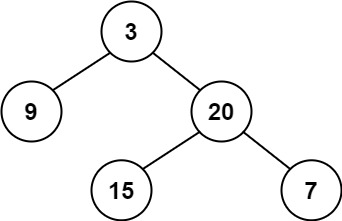题目
简单
给定一个二叉树,判断它是否是
平衡二叉树
示例 1:

输入:root = [3,9,20,null,null,15,7] 输出:true
示例 2:

输入:root = [1,2,2,3,3,null,null,4,4] 输出:false
示例 3:
输入:root = [] 输出:true
提示:
- 树中的节点数在范围
[0, 5000]内 -104 <= Node.val <= 104
面试中遇到过这道题?
1/5
是
否
通过次数
608.6K
提交次数
1M
通过率
58.4%
方法一:自顶向下的递归
二叉树是平衡二叉树的三个条件
1、左子树与右子树的高度差<=1
2、左子树是平衡二叉树
3、右子树是平衡二叉树
class Solution {
public:int height(TreeNode *root){if(root==NULL) return 0;return max(height(root->left),height(root->right))+1;}bool isBalanced(TreeNode* root) {if(!root) return true;return abs(height(root->left)-height(root->right))<=1&&isBalanced(root->left)&&isBalanced(root->right);}
};时间复杂度:O()
空间复杂度:O(n)
方法二:自底向上的递归
方法一由于是自顶向下递归,因此对于同一个节点,函数 height 会被重复调用,导致时间复杂度较高。如果使用自底向上的做法,则对于每个节点,函数 height 只会被调用一次。
自底向上递归的做法类似于后序遍历,对于当前遍历到的节点,先递归地判断其左右子树是否平衡,再判断以当前节点为根的子树是否平衡。如果一棵子树是平衡的,则返回其高度(高度一定是非负整数),否则返回 −1。如果存在一棵子树不平衡,则整个二叉树一定不平衡。
官方题解
class Solution {
public:int height(TreeNode* root,bool &balanced) {if (root == NULL) {return 0;}int leftheight=height(root->left,balanced);int rightheight=height(root->right,balanced);if(abs(leftheight-rightheight)>1||!balanced){balanced=false;return -1;}return max(leftheight,rightheight)+1;}bool isBalanced(TreeNode* root) {bool balanced=true;return height(root,balanced) >= 0;}
};时间复杂度:O(n)
空间复杂度:O(n)

)
---- Debian测试网速指令及查看是否千兆网卡)





)



)



】)


